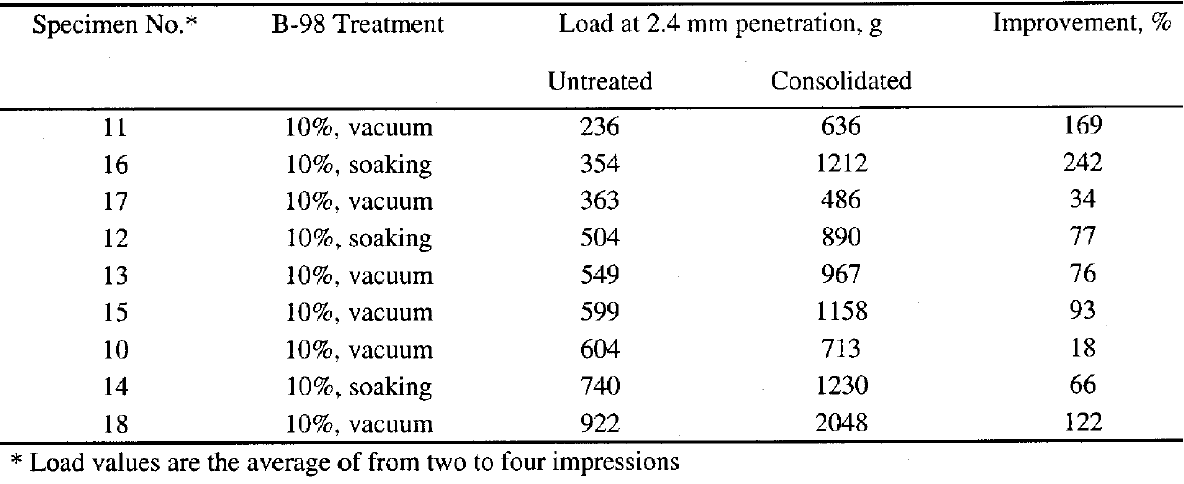ALVAR AND BUTVAR: THE USE OF POLYVINYL ACETAL RESINS FOR THE TREATMENT OF THE WOODEN ARTIFACTS FROM GORDION, TURKEYKRYSIA E. SPIRYDOWICZ, ELIZABETH SIMPSON, ROBERT A. BLANCHETTE, ARNO P. SCHNIEWIND, MAURAY K. TOUTLOFF, & ALISON MURRAY
6 EXPERIMENTAL—NEEDLE HARDNESS TESTINGIn order to quantify the improvement in strength
6.1 MATERIALThe samples consisted of wood fragments of irregular shape ranging in size from as little as 4 x 9 x 8 mm to a maximum of 35 x 70 x 115 mm. All the wood was selected from pieces belonging to Tumulus P that could not be identified as belonging to a specific object or piece of furniture. All the samples were cut in half using a coping saw with a fine blade. Half of each sample was set aside to provide a control while the other half was treated. A 10% w/v solution of Butvar B-98 in 60:40 ethanol and toluene was used to consolidate the samples. The method of consolidation consisted of simple soaking or a combination of soaking and vacuum impregnation. 6.2 METHODAn Instron table model testing machine was fitted with a Singer sewing machine needle, style 2020, size 110/18, no. 2085 (4758). The test procedure consisted of driving the needle into the wood samples while they were being observed with a stereoscopic inspection microscope at 10x. The load was recorded continuously. The loads at 2.4, 4.5, and 5.6 mm needle penetration were marked and recorded. In some cases, the load at the greater depths of penetration could not be determined because of splitting of the wood. For samples that were very small, the tests were discontinued after 2.4 mm penetration. 6.3 RESULTS AND DISCUSSIONResults are summarized in table 1 for loads at 2.4 mm needle penetration. Strength improvement was assessed by comparing mean values of the untreated and treated samples and expressing the change as a percentage. All the consolidated samples demonstrated a marked improvement in strength varying from 18% to 242%. Due to the small numbers of test samples available and the large variability of the data, it was not possible to draw any additional conclusions as to whether the strength of the wood was improved by varying the method of application. Considering the heterogeneous structure of wood, and especially of deteriorated wood, it is not surprising that considerable variability is present. Load values range from 236 g to 922 g for untreated samples and from 486 g to 2,048 g for the consolidated ones. There was also variation within specimens. The ratio between the lowest and the highest To investigate whether the great range of improvement values in needle hardness after consolidation was related to the variation in hardness values of the untreated samples, the data of table 1 were listed in ascending order of the hardness loads of the untreated specimens. As might be expected, there is some degree of inverse correlation between hardness of the untreated specimens and the improvement obtained. The two specimens with the lowest hardness showed the greatest improvement, and the lowest value of improvement is found in the upper range of hardness before treatment. It can therefore be concluded that the consolidation treatment effected significant improvement in needle hardness, with a tendency toward greatest improvement of the weakest pieces, and introduced a degree of uniformity within specimens. |
